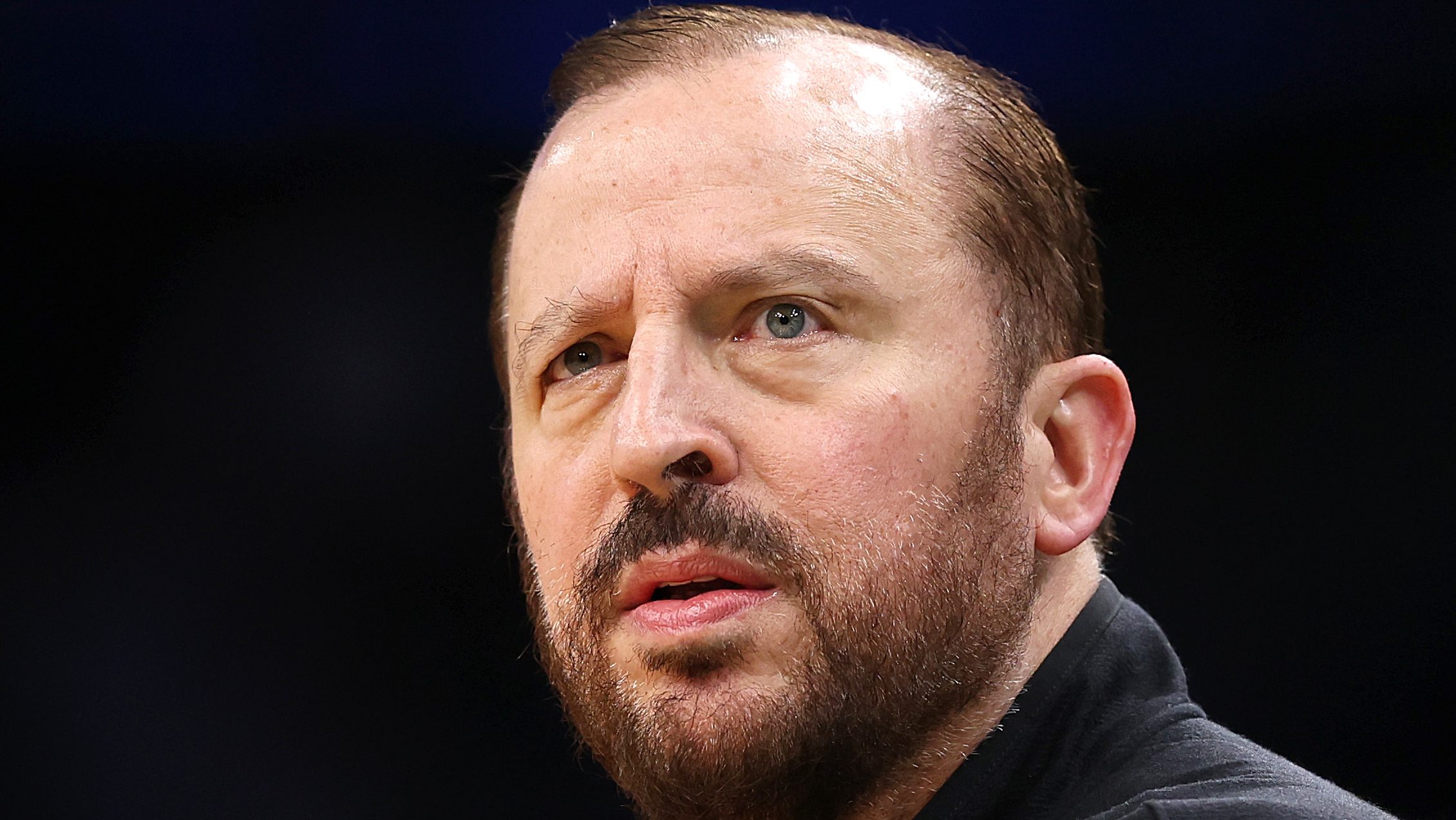World
AI is reshaping drone warfare in Russia and Ukraine

SLOVIANSK, UKRAINE — It looked like an ordinary, modest house on the outskirts of Sloviansk, a small city just behind the front line in eastern Ukraine. But the parlor’s heavy furniture had been replaced by folding tables and six big flat-screen TVs. Five men in fatigues monitored the images flashing across the screens: direct feeds from some three dozen first-person-view (FPV) drones hovering above the front line just 15 miles away.
There were no fighters in the images and no weapons or military vehicles. Both Russians and Ukrainians have learned to keep all that hidden from the drones constantly swarming overhead. But the invaders could still advance at any moment, and the soldiers in the command center — members of a new unit called “Heavenly Punishment” — scoured the video feeds, zooming in and out on tree lines and scattered rocks that might disguise foxholes.
A sixth screen integrated the information from the feeds: a giant animated map showing both sides’ positions and assets — a Russian tank here, a Russian surveillance drone loitering there. No one spoke as the men watched and probed, waiting for the opportunity to order a strike, either by an attack drone or one of the unit’s few remaining artillery cannons.
In two and a half years of war, drones have transformed the fighting in Ukraine. Autonomous devices come in all shapes and sizes — reconnaissance drones, attack drones, sea drones, even unmanned vehicles for medical evacuations. Most of the FPV drones feeding the screens in Sloviansk are just 10 inches long, made from cheap commercial components, usually Chinese, and powered by rotors.
At the other end of the spectrum, large, expensive devices with fixed wings — some resemble small airplanes — can strike up to 1,000 kilometers away, delivering massive payloads. In the past year, Ukrainian drones have destroyed or damaged 200 airfields and oil refineries deep inside Russia.
The new technology is driving dramatic changes on the battlefield. The overhead buzzing never stops; everything that happens on or near the front is visible to the enemy. Soldiers now prefer covered foxholes to open trenches — it’s harder for a drone to peer inside a foxhole or drop an explosive from above. Even tanks stay hidden well behind the front line. Advancing Russians often dash toward Ukrainian troops on motor bikes or in golf carts these days — less vulnerable to drone strikes than large, lumbering armored vehicles.
Both Russians and Ukrainians are racing to develop new drone technology, each working at warp speed to keep up with the other and render its equipment obsolete. The fixed-wing reconnaissance drones that gave Kyiv a major advantage in the first months of war are no longer useful thanks to Russian countermeasures. An important early turning point was Ukraine’s use of cheap commercial drones for kamikaze strikes, and the country is still ahead in deploying small FPV attack drones. Other developments include better cameras, more precise sensors, longer-range antennas, smaller engines and stealthier devices.
But the most important contest isn’t about hardware — it’s electronic. Russia’s main advantage is its ability to jam and spoof the radio signals that connect Ukrainian drones and drone pilots. The consequences can be disastrous. Ukrainians fail to spot advancing Russians; their attack drones lose their way and miss their targets or crash uselessly to the ground. Some analysts estimate that Russian electronic warfare (EW) could be incapacitating more than half of Ukrainian battlefield drones — and Ukrainian efforts to get around this jamming and spoofing are now one of the most important fronts of the war.
In the long run, the answer is artificial intelligence – software that enables an attack drone to fly the last mile without a pilot. It’s a twofold challenge for developers — there are two essential steps an AI-enabled drone must be able to perform by itself. The first challenge is navigation: developing software for the tiny flight controller on board the drone that knows the intended flight path and recognizes the territory below, guiding the device to its target without GPS or other help. The second step is the strike – recognizing the targeted object and diving or releasing an explosive payload without a signal from a pilot on the ground.
DroneControl is one of a handful of Ukrainian startups working to solve these problems. A spinoff of an older firm, it draws on the large pool of IT talent that made peacetime Ukraine a global hub for software development. But now, in wartime, many technicians have turned to making weapons, and DroneControl showcases the difference between the Russians and Ukrainians scrambling to develop drone technology.
“The Russians have more money,” DroneControl manager Dmytro Saltovets explains. “They have more powerful electronics and make bigger drones, manufactured in large quantities at state-funded plants — the Russian military-industrial complex.” DroneControl is a small private company — one of several hundred producing drones, drone components and software — with no connection to the government and operating on a shoestring budget.
Ingenious engineers and programmers driven by a sense of wartime urgency make do with what’s available. One recent day at a test field, a DroneControl team used duct tape and plastic zip ties to attach hand-made components to a battered Styrofoam winged device. “Startups like ours are more flexible than big Russian manufacturers,” says Saltovets, an engineer by training and former soldier. “We’re more resourceful and motivated, and we rely on soldiers to provide feedback to refine our products.”
The command center in Sloviansk, struggling first-hand to combat Russian EW, is on the other side of this all-important feedback loop. According to the unit’s commander, who goes by the call sign “Horse,” Heavenly Punishment is already deploying rudimentary AI to help pilots home in on nearby targets. But in the meantime, while it waits for more sophisticated solutions, the group is developing its own improvised answers.
The unit has a team of technicians and programmers who modify drones donated by civilians and nonprofit groups. The team communicates frequently with hardware and software developers about what’s needed on the battlefield — it texts to request a different engine or a different flight controller or a more precise algorithm. “It’s a normal IT product cycle,” Saltovets explains. “A company develops a minimal viable product, then tests it in the field. Only in this case, lives are at stake, so the cycle is much faster — it happens in a matter of days or weeks.”
The Heavenly Punishment team also builds its own devices, mostly from components purchased on the Web. Among its proudest products is an aerial “repeater” that can relay electronic signals from a distant FPV drone to a pilot on the ground, extending the FPV device’s range by up to 30 miles. Even more important in the race to beat Russian EW, the team often rewrites the software guiding its drones, modifying the frequencies of the signals they rely on and enabling them to switch frequencies in mid-flight.
Who is winning the drone technology race? Ukrainian technicians and soldiers say the contest is neck and neck. “The Russians are better at some things,” says Saltovets. “We’re better at others.” Perhaps not surprisingly, by all accounts, the Ukrainians still produce better short-range battlefield drones and deploy them more ingeniously. But when it comes to big, expensive systems, the Russians often have an advantage.
The one exception: sea drones — Kyiv is way ahead in that realm. Ukraine is also catching up on EW — the surprise incursion in Kursk in August would have been impossible without extensive jamming and spoofing. It’s too early to tell who’s ahead in the AI race. Moscow’s other big advantage: its Orlan-10 reconnaissance drones, which are often able to evade Ukrainian detection and can order deadly strikes by a range of attack weapons – drones, artillery and ballistic missiles.
Unlike in many other Ukrainian conversations about what’s needed on the battlefield, the United States comes up relatively rarely in discussions of the drone war. Ukrainians believe the US makes a drone as good as the Orlan, but they don’t expect the Pentagon to share it — we’ve shared little if any cutting-edge military technology. President Volodymyr Zelensky recently asked the West for additional funding for drone development, and technicians complain bitterly about America’s seeming inability to prevent US electronic components from making their way into Russia. But by and large, Ukrainians seem to see the drone race as something they can and must do for themselves.
Drone development and AI are positioning Ukrainian firms to play a leading role in the global technology market, and many are already eyeing military and civilian buyers abroad. But in the short term, on the front near Sloviansk, heavy artillery is still essential — still more reliable and destructive than drones — and Ukraine is still desperately short of both artillery cannons and ammunition. “We’re agile, we’re determined, and we’re holding our own,” says commander Horse. “But drones are no substitute for heavy weapons, and we still need American help.”
Tamar Jacoby is the director of the New Ukraine Project at the Progressive Policy Institute.










